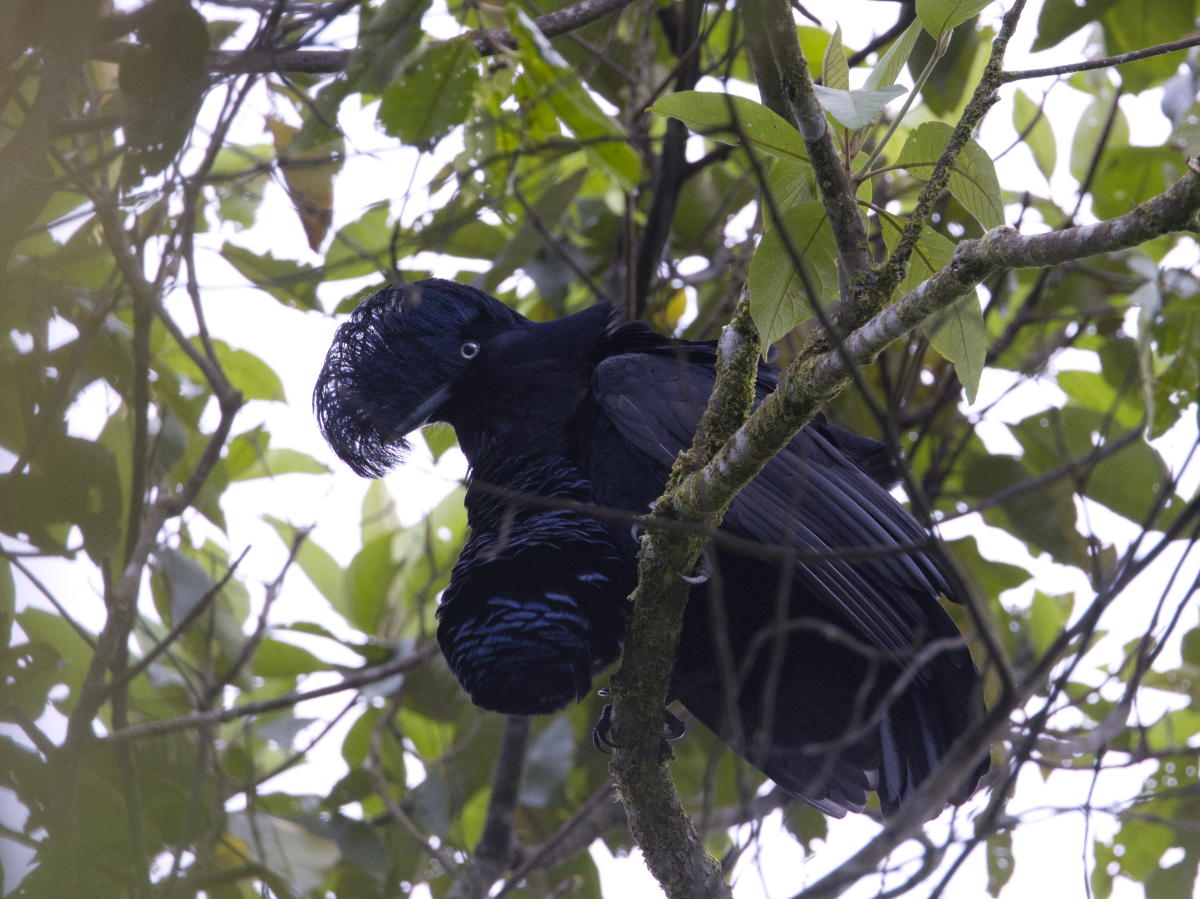The recent loss of our Amazonian Umbrellabird lek is a poignant reminder of the delicate balance between conservation and the immediate economic needs faced by landowners in the Ecuadorian Amazon.
Last week, we learned of an unfortunate turn of events. A landowner, initially willing to collaborate with our foundation, chose to convert his land for naranjilla cultivation. He chopped down the native forest, likely harvesting the hardwoods for their economic value, before tilling the soil for agriculture. His family was under financial pressure and he felt left with no viable options. In a few years time, the naranjilla will no longer be viable and the land will likely revert to cattle pasture.
While we are trying to create a partnership with a larger NGO to help fund land purchases, this takes time. And crowdfunding has been difficult these past few months. This loss underscores the critical challenge we face in our mission to preserve the natural and cultural wealth of Wawa Sumaco.
About the Amazonian Umbrellabird
The Amazonian Umbrellabird, as explained to us by our esteemed local guide Byron Gualavisi, is a creature of captivating habits and profound shyness. It is an emblematic species of the Ecuadorian Amazon and a favorite among international birdwatchers for its strange boa-like wattle that shines midnight blue in the dim light of the rainforest.
Byron has spent many years watching these birds. He notes that they share traits with the Andean Cock-of-the-Rock in their fruit-based diet, and their unique lekking behavior. In these gatherings, males engage in a spectacular display of sounds and movements, a competitive concert designed to attract the attention of females. The most sonorous of males often triumphs in winning the favor of a mate.
Preferring the dense foliage of primary forests near rivers or water streams, the Umbrellabird occasionally ventures into secondary forests, though it is in the primary forests where the true spectacle of leks unfolds. These leks are usually located amidst the towering trees of canelo, a valuable hardwood. This likely played into the loss of our current lek as the owner would have been able to sell these trees at an immediate profit.

The Amazonian Umbrellabird’s Importance to the Ecuador’s East Slope
The Amazonian Umbrellabird plays a pivotal role in the biodiversity of the region. These birds prefer dense, primary forests near water sources for their habitats and leks, making them highly susceptible to habitat loss. For this reason, they also serve as an umbrella species, no pun intended. This means that by protecting the Umbrellabird, we indirectly conserve many other species in the Sumaco Biosphere Reserve.
The conversion of their natural habitats into agricultural land not only disrupts these intricate ecological networks but also diminishes the natural heritage that Amarun Pakcha is dedicated to protecting through sustainable ecotourism.

The Loss of the Lek Hurts More Than The Birds
This loss is particularly significant because it represents more than just a reduction in biodiversity. It marks a setback in our collective efforts to create a sustainable model that balances ecological preservation with local economic development. The cultivation of naranjilla, while providing a short-term economic solution, often leads to long-term environmental degradation due to its heavy reliance on pesticides and the eventual conversion of land into cattle pastures after its viability wanes.
As we reflect on this event, it’s essential to reinvigorate our commitment to finding innovative solutions that offer sustainable economic alternatives to local communities. This might include accelerating our efforts in land acquisition for conservation, enhancing our community engagement and education programs to raise awareness of the long-term benefits of conservation, and exploring more sustainable agricultural practices that can coexist with the preservation of natural habitats.
In sharing the story of the lost Amazonian Umbrellabird lek, we aim not only to highlight the challenges we face but also to inspire action and support from the global community. This is a call to reinforce our resolve in safeguarding the Ecuadorian Amazon’s irreplaceable ecosystems and the myriad of life they support. Together, through collaboration and innovative conservation strategies, we can ensure that the loss of this Umbrellabird lek becomes a catalyst for renewed efforts in preserving the Amazon’s precious natural and cultural heritage.

0 Comments